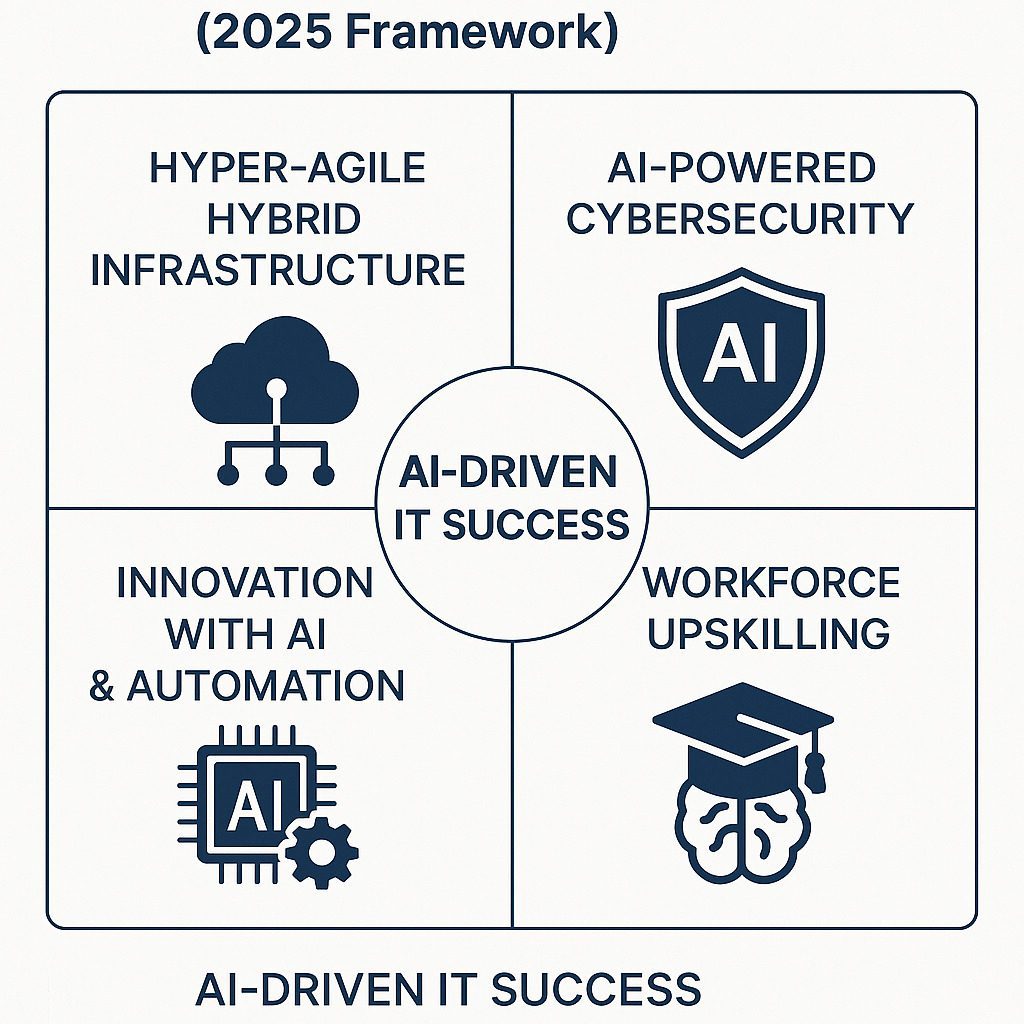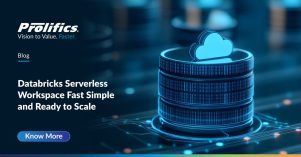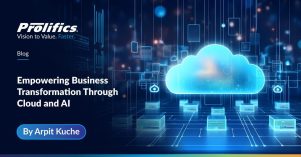AI-driven IT is no longer a future concept — it’s the reality shaping how businesses succeed in 2025. Remember the New Normal? What began in 2020 as a period of unprecedented change has evolved into a fully realized digital age. Remote work isn’t a temporary pivot; it’s now a permanent fixture of our culture.
The conversation has shifted from reacting to a crisis to strategically navigating the future of IT. As we move into 2025 and 2026, the real question for IT leaders is: How do you build a resilient, innovative, and competitive organization? The answer lies in moving beyond adaptation and embracing the next wave of strategic initiatives — built on the four pillars of AI-driven IT success.
Why AI-Driven IT Matters in 2025
Here are four updated strategies for IT success in the AI-driven era.
1. Build a hyper-agile and secure hybrid infrastructure
The future of work is undeniably hybrid, but success depends on more than just providing a laptop and a video conferencing tool. The new focus is on creating a flexible, secure, and seamless digital environment that supports employees wherever they are.
- Invest in a zero-trust architecture: Move beyond perimeter-based security. A zero-trust model verifies every user and device trying to access network resources, securing your distributed workforce against modern threats.
- Optimize employee experience (EX): Focus on a unified digital experience. This means investing in next-gen collaboration and productivity platforms that are intuitive, integrate seamlessly, and ensure employees feel connected and productive from any location.
- Leverage SASE (Secure Access Service Edge): Adopt a SASE framework that converges network and security functions into a single, cloud-native service. This provides secure, low-latency access for all users, regardless of their location, solidifying your IT resilience.
2. Prioritize proactive, AI-powered cybersecurity
The threat landscape has grown increasingly sophisticated. Relying on reactive security measures is no longer sufficient. In 2025, proactive cybersecurity driven by artificial intelligence (AI) is a core business function, not just an IT responsibility.
- Implement AI-driven threat detection: Use AI and machine learning to analyze vast amounts of data, detect anomalies, and identify potential threats in real time before they can cause damage.
- Embrace predictive security: Move from simply reacting to threats to anticipating them. AI-powered analytics can help identify vulnerabilities and predict potential attack vectors, allowing your team to reinforce defenses proactively.
- Automate incident response: Automate security workflows and protocols to accelerate threat response times. This allows your security team to focus on higher-level strategy rather than getting bogged down in manual, repetitive tasks.

3. Scale innovation with AI and automation
The strategic value of IT is no longer just about keeping the lights on—it’s about accelerating innovation and driving business value. By leveraging AI and automation, IT can free up resources and enable strategic growth.
- Adopt hyperautomation: Combine intelligent automation (IA) and robotic process automation (RPA) to automate complex business processes across your organization. This frees up talent for more creative and strategic projects that move the business forward.
- Accelerate your targeted cloud strategy: The cloud is the engine of AI. Optimize your existing cloud investments by focusing on strategic initiatives with a clear business purpose, not just a “lift and shift” of legacy applications.
- Democratize AI adoption: Equip business units with low-code/no-code AI tools, allowing them to build custom solutions and drive innovation without deep technical expertise. This fosters a culture of innovation and enables a truly agile organization.
4. Strategically upskill and reskill the IT workforce
Technology evolves faster than ever, and so must your team. The best IT leaders are prioritizing continuous learning to build a resilient and highly skilled workforce for the future of IT.
- Cultivate an AI-fluent workforce: Provide targeted training in AI, machine learning, and data science. This ensures your team can not only implement AI solutions but also identify new opportunities to apply them.
- Prioritize soft skills: As technical tasks become more automated, skills like problem-solving, collaboration, and strategic thinking become paramount. Invest in training that develops these uniquely human capabilities.
- Implement data-driven learning paths: Use internal data and analytics to identify skill gaps and create personalized learning paths. This ensures your IT upskilling initiatives are both efficient and aligned with your long-term digital transformation strategy.
Conclusion
From pandemic response to AI-driven transformation, IT’s role has evolved dramatically in just five years. The 4 Pillars of IT Success in the AI-Driven Era—hyper-agile hybrid infrastructure, AI-powered cybersecurity, scaled AI innovation, and workforce upskilling—provide a framework for sustainable success in 2025 and beyond.
Organizations that invest in these pillars today will be positioned not just to adapt but to lead in a future defined by constant change.




